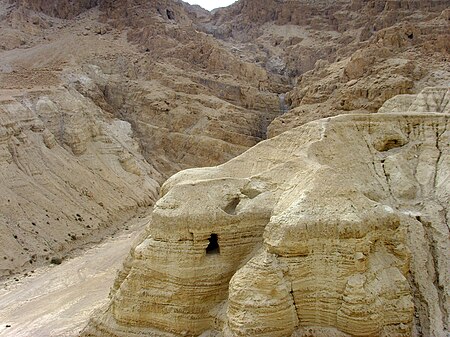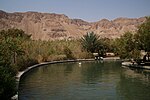Qumran Caves
Archaeological sites in the West BankCaves of the State of PalestineDead Sea ScrollsJudaean DesertQumran

Qumran Caves are a series of caves, both natural and artificial, found around the archaeological site of Qumran in the Judaean Desert. It is in these caves that the Dead Sea Scrolls were discovered. Israel Nature and Parks Authority took over the site following the end of the 1967 war, when Israel occupied the West Bank and seized Qumran. Israel has since invested heavily in the area to establish the Qumran caves as a site of "uniquely Israeli Jewish heritage". The caves are recognized in Israel as a National Heritage Site, despite the caves being in occupied Palestinian territories; as such, the designation has drawn criticism.
Excerpt from the Wikipedia article Qumran Caves (License: CC BY-SA 3.0, Authors, Images).Qumran Caves
Dead Sea, Megilot Yam HaMelakh Regional Council
Geographical coordinates (GPS) Address Nearby Places Show on map
Geographical coordinates (GPS)
| Latitude | Longitude |
|---|---|
| N 31.73 ° | E 35.46 ° |
Address
דרך ים המלח
Dead Sea
Megilot Yam HaMelakh Regional Council
Judea and Samaria, Palestinian Territories
Open on Google Maps









